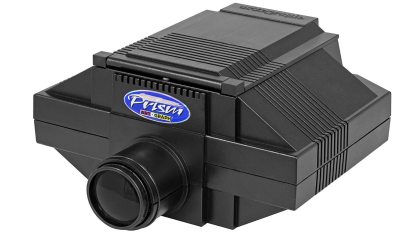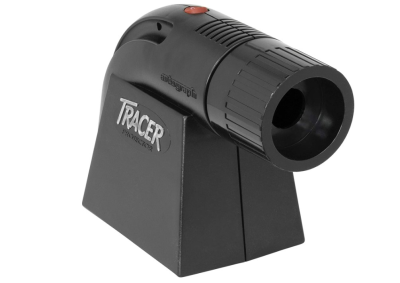If you’re an artist, having a projector on-hand can be a huge time saver when you’re working on larger projects, letting you sketch out your designs on a smaller scale before you start in on the full-sized work.
They can also be a great tool for DIY decorators, letting you create murals and other wall decorations with ease, and make creating banners or signs for events a whole lot simpler, too. There are a lot of different projector designs out there.
If you’re just starting on your search for the best projector for tracing images, you can’t go wrong looking at the Artograph catalog. They sell a slew of different projector models and styles, in a wide array of price points. We’ve picked out four of our favorites below to give you an idea of your options.
Best Projector for Tracing Images – the top Options of 2023:
| Artograph Flare150 | Artograph 225-090 | Artograph Tracer | Artograph EZ Tracer | |
|---|---|---|---|---|
 |
 |
 |
 |
|
| Resolution | 1280 x 720 | No data | No data | No data |
| Brightness (Lumens) | 150 ANSI | 3800 | 1600 | No data |
| Contrast Ratio | 100000:1 | No data | No data | No data |
| 3D | No data | No data | ||
| Connectivity | USB, HDMI, wireless with most Android devices | No data | No data | No data |
| Lamp life (Hours) | 30,000 hours | No data | 8000 hours | No data |
| Built in Speakers | No data | No data | No data | |
| Price | Check on Amazon | Check on Amazon | Check on Amazon | Check on Amazon |
Flare150 Digital Art Projector by Artograph

Pros
- High-resolution HD images
- Compatible with a wide range of image types and sources
- Simple adjustment of image size, color, and orientation
- Included grids help with layout and design
- Option of using battery or outlet power
- Comes with all the accessories you need, including remote, cables, and battery
Cons
- Highest cost of any option on the list
- Mac users may need to get an extra adapter
If money is no object and you just want the highest-quality and most fully-featured projector that you can get, you should check out the Flare150. It has all the bells and whistles a professional artist needs, in a compact, portable, and easy to use package.
The image quality on this projector is sharp and clear. It gives you full HD quality images, with a resolution of 1280X720p and up to 150 lumens of brightness from the lamp. These parameters are also good enough for playing various simulators.
The size of the image can be adjusted easily—magnifying or shrinking them is simply a matter of pressing a button, and the integrity of the image is maintained at every size. You’ll get other image adjustment options, too.
You can flip or reverse the image, rotate it, and even adjust the color or switch it to grayscale, all with a single button push. If you want some help positioning elements of your design, you can use one of the 36 on-board grid styles.
As impressive as these features are, it’s the versatility of this projector that really got our attention. You can run it either on battery or outlet power, so you can really take it anywhere.
The small size and light weight mean it’s easy to transport, and the casing is durable enough you don’t have to worry overmuch about breaking it. The combination of high image resolution and detailed-oriented design make this the best projector for tracing images or laying out projects anywhere.
Artograph 225-090

Pros
- Dual cooling system prevents overheating
- Photo-quality bulbs provide 500 watts of illumination
- Magnifies up to 20X and reduces down to 80%
- Easy to focus and adjust
- Removable lid lets you project 3D and flat objects
Cons
- Copy area is on the smaller side
- Still a fairly expensive option
If you’re looking to project physical images and objects—rather than images from a digital source—you’ll want to get an opaque projector, like the Artograph Prism. It will let you project both flat images and those taken from three-dimensional objects, making it a very versatile option for tracing images you find in the real world.
This projector has a 7” X 7” copy area, which we did find to admittedly be on the small side. It’s enough space for most photographs or illustrations from books, but if you want to trace larger images you might find it frustrating.
The good news is that it uses a top-loading design with a hinged, removable lid, giving you the option of moving the image around to capture different areas of it—not the most convenient method, but a reasonable workaround.
In terms of the projection itself, we had no complaints. It uses two bulbs to make the sure image is bright, crisp, and clear. The range of size adjustment options is also impressive.
It offers up to 20X magnification for images, and you can shrink them if you’d like, too, although given the size of the screen you’re not likely to be needing that option as much. We found it fairly easy to focus the image, although it did take some fiddling at first, even after consulting the user manual.
The build of this projector is durable both inside and out. It definitely feels like a solid piece of equipment that you’ll get years of use out of. In our book, this is a perfect projector for painters who want to trace small initial sketches onto a larger canvas.
It can get large enough that you can even use it to paint murals from photos or drawings, although you likely will need to project the original in sections.
Artograph Tracer

Pros
- Great value at under $100
- Enlarges images up to 10X the size of the original
- Ready to use right out of the box
- Easy to operate
- Solid casing and build
Cons
- More limited copy area and range than pricier options
If you’re looking for an opaque projector but don’t quite have the funds for the models above, the Artograph Tracer Projector is certainly worth your attention.
It’s slightly more limited than the Prism in terms of the size and distance of projection, but it will still give you a great image reproduction and is the best projector for tracing images for under $100.
The Autograph Tracer Projector uses an over-image design. Simply place the projector overtop of the image you want to reproduce and it will appear on the surface in front of the lens. It uses a 10-watt bulb, and though this is dimmer than other options on the list, it’s still plenty of illumination for clear reproduction of your images.
For the “enlarging” side of things, it’ll go up to ten times the size of the original, which is plenty for all but the largest murals and projects.
Using this projector was a breeze. In fact, we found setting it up to be even easier than with the more expensive options above. You can basically just plop it down on the image you want to trace and get right to work.
Since it sits right on the original image, adjusting it doesn’t mean opening lids and making annoying tweaks—you can just shift the projector itself and see the results instantly on the screen.
Compared to pricier projectors, this has a fairly small copy area—only 5 inches square. It also can’t project as far, sending the image only up to 14 inches.
For less than half the price of more elaborate models, though, these are concessions we’re willing to make. The overall build quality is still quite high, too, so you won’t need to make any sacrifices in terms of durability or reliability when you get the Artograph Tracer.
Artograph EZ Tracer Art Projector

Pros
- Attached handle and wide base make it easier to adjust
- Most affordable option on the list
- Very lightweight design makes it super portable
- Easy to use and adjust
Cons
- Images tend to get a bit blurry around the edges
- Build feels a bit flimsy
Finally, in the super-budget category, we have the Artograph EZ Tracer. The combination of low price and easy use makes it the perfect projector for kids, hobbyists, and anyone else who wants to project and trace images but not spend a whole ton of money to do it.
The EZ Tracer has a 4” X 4” copy area and can enlarge images between 2.5X and 5X of the original. Like the model above it sits directly on the image to be projected, so making slight adjustments to the image’s placement is fairly easy.
The longer base and attached handle on the EZ Tracer actually make it even easier to make these small shifts without tipping the projector over—especially helpful if you’re getting this for a young artist.
The image that’s projected looks fairly clear. We did notice that it got a bit blurry at the very edges no matter how we adjusted it, but getting the center of the image clear was a pretty quick process.
The illumination comes from a single 23-watt CFL bulb and it’s plenty bright for indoor purposes. You will likely have trouble seeing the images if you’re using it outside, or in a particularly sunny room.
This is an incredibly lightweight little projector. You can really take it with you anywhere there’s an outlet. The cord is plenty long enough to stretch across the room and let you maneuver the projector easily. The only downside of this is that it does feel a bit flimsy. It even looks a bit like a toy, and that’s how it feels in comparison to some of the other options, but it got the job done—and you can’t beat the price.
So what’s the bottom line?
If you want to be able to project and trace digital images, you’re going to have to pay for the privilege—about twice as much, in fact, compared to even high-end opaque projectors.
Digital projectors give you a lot more freedom when it comes to the kinds of images you can project and how you’re able to manipulate them, but if you typically project hand-sketched images, anyway, an opaque projector will be more in line with your needs.
Within the category of opaque projectors, the main distinguishing factors between price points are going to be the size of the copy area and the amount of magnification you can add to the image.
If you have the budget for something like the Prism it’s definitely worth the money, but you can still get projected images that are high enough quality for tracing with any of the options on this list.